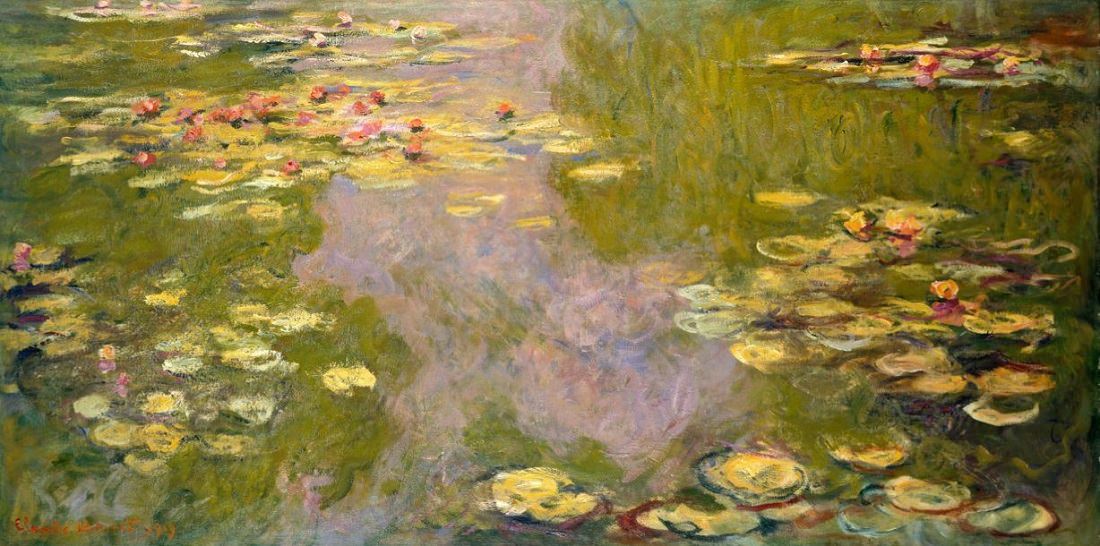Water Lilies by Claude Monet
At the close of his life Monet, grasping for the immaterial, produced an art without form or depth at the verge of abstraction. For twenty years, working on large canvases, he relentlessly painted the
most vaporous clouds and the most ephemeral unions of sky and water. This atmosphere no longer draws attention to a specific object but by means of impregnation penetrates sensibility.
The first series of Water Lilies, a total of twenty-five canvases, was exhibited at the Galerie Durand-Ruel in 1900. This was followed nine
years later by a second series of forty-eight canvases. "These landscapes of water and reflection have become an obsession," wrote Monet on August 11, 1908. "This is beyond the strength of an old man,
and yet I want to express what I feel. I have destroyed some of the canvases. I begin once again. ... I hope something will come of all this effort."
Monet organized his property at Giverny as though it were a huge painting. Thanks to a small army of gardeners, he diverted a river, planted exotic flowers, weeping willows, bamboo trees. He seeded
the pond and added enclosures with white chickens, ducks, and pheasants. Nature, recomposed by the artist, began to resemble his art. "My finest masterpiece," he later said, "is my garden."
